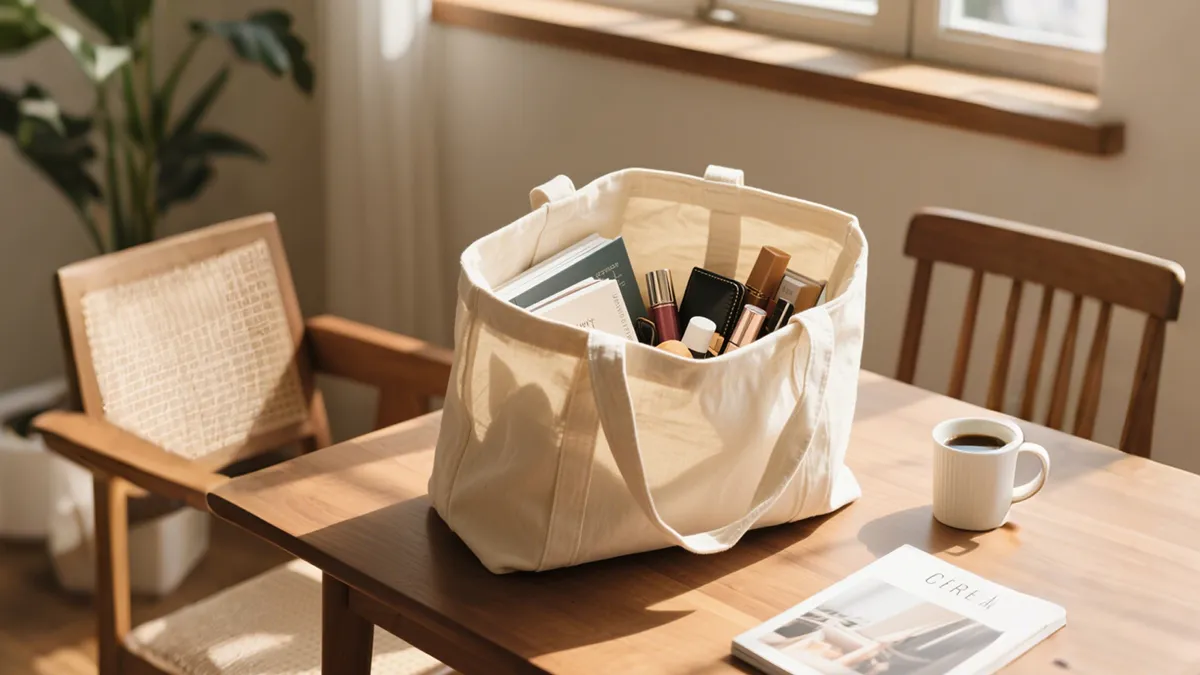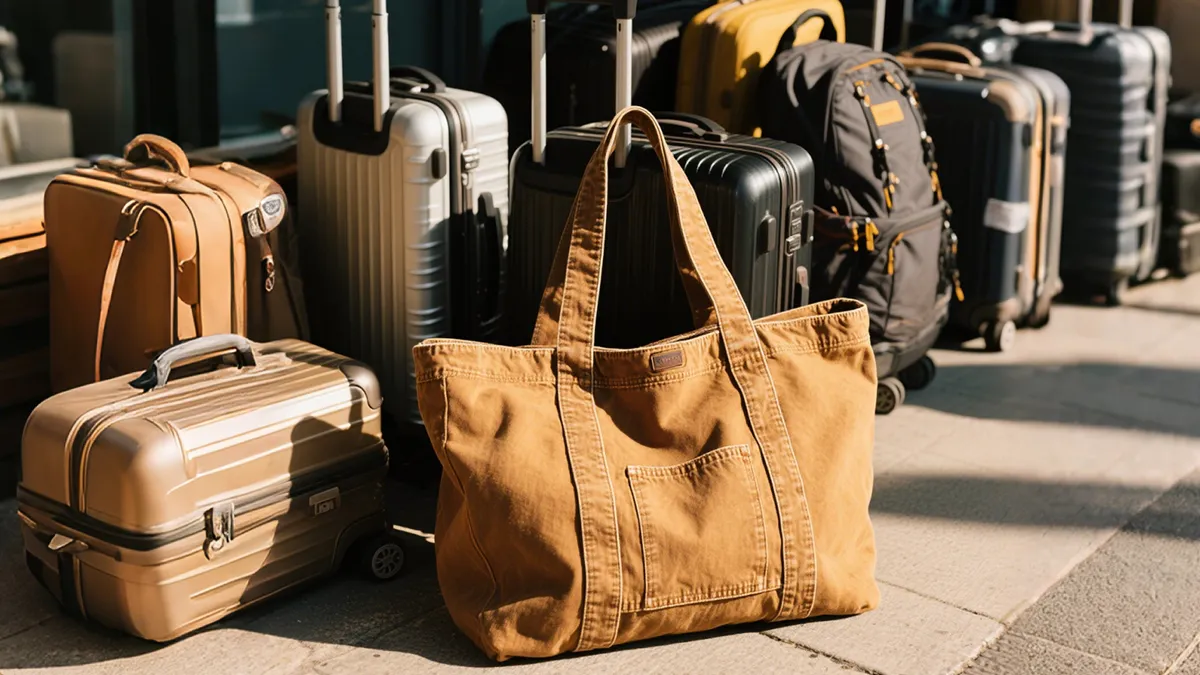Tote bags have become a staple in our daily lives, used for everything from grocery shopping to carrying work essentials. But have you ever wondered just how big they are? The size of a tote bag can vary significantly depending on its intended use, design, and style. Let’s explore the world of tote bag sizes in detail.

Standard Tote Bag Sizes
When it comes to standard tote bags, there are some well – defined measurements that are widely accepted. Here is a detailed breakdown of common standard tote bag sizes:
| Tote Bag Type | Width (inches) | Height (inches) | Depth (inches) | Handle Length (inches) |
| Everyday Tote | 15 | 16 | 5 | 22 |
| Mini Tote | 10 | 12 | 3 | 18 |
| Medium Tote | 13 | 14 | 4 | 20 |
The everyday tote, with its 15 – inch width, 16 – inch height, and 5 – inch depth, is a true workhorse. It can easily hold a 13 – inch laptop, a couple of thick textbooks, a large wallet, a water bottle, and some makeup items. The 22 – inch handle length allows for comfortable shoulder carrying, making it a great companion for commuting to work or school.
The mini tote, measuring 10 inches in width, 12 inches in height, and 3 inches in depth, is all about portability. It can snugly fit a smartphone, a small keychain, a lipstick, and a folded tissue, making it ideal for a quick walk in the park or a short visit to a friend’s place.
The medium tote, with dimensions of 13 inches in width, 14 inches in height, and 4 inches in depth, strikes a balance between the everyday and mini totes. It’s perfect for carrying a tablet, a notebook, a small umbrella, and a few snacks, suitable for a half – day outing or a trip to the library.
Tote Bag Sizes for Specific Uses

Different activities and tasks require tote bags of specific sizes. Here are the typical sizes for tote bags designed for particular uses:
| Specific Use | Width (inches) | Height (inches) | Depth (inches) | Handle Length (inches) |
| Grocery Tote | 18 | 20 | 7 | 24 |
| Beach Tote | 22 | 24 | 9 | 26 |
| Work Tote | 16 | 18 | 6 | 23 |
Grocery tote bags are designed to handle a large number of items. With an 18 – inch width, 20 – inch height, and 7 – inch depth, they can easily hold several loaves of bread, a gallon of milk, a bunch of fruits, and a few cans. The 24 – inch handles are long enough to be carried over the shoulder, even when the bag is fully loaded, reducing the strain on your hands.
Beach tote bags need to accommodate all your beach gear. A 22 – inch width, 24 – inch height, and 9 – inch depth provide ample space for a couple of large beach towels, a big bottle of sunscreen, a change of clothes, a pair of flip – flops, and a beach ball. The 26 – inch handles make it easy to carry over the shoulder, even when the bag is bulging with items.
Work totes are tailored for professionals. Measuring 16 inches in width, 18 inches in height, and 6 inches in depth, they can hold a 15 – inch laptop, a stack of documents, a planner, a lunchbox, and a small folder. The 23 – inch handle length ensures that the bag sits comfortably on your shoulder during your daily commute.
How Tote Bag Sizes Are Measured
Understanding how tote bag sizes are measured is crucial to ensuring that a particular bag will meet your requirements. The width is measured horizontally across the top edge of the bag, from the left side seam to the right side seam. This measurement determines how much space is available for placing items side by side.
The height is measured vertically from the bottom of the bag’s base to the top of the opening. It tells you how tall the interior of the bag is, which is important for fitting taller items like books or a laptop.
The depth, also called the gusset, is the distance between the front panel and the back panel of the bag when it’s fully expanded. This measurement affects the bag’s capacity to hold bulky items, as a larger depth means the bag can hold more volume.
In addition to the main dimensions, the handle length is another key measurement. It is measured from the top of one handle attachment point to the top of the other. Short handles, around 6 inches, are designed for carrying the bag in your hand, giving it a more formal look. Long handles, 20 inches or more, allow you to sling the bag over your shoulder, providing hands – free convenience.
Comparing Tote Bag Sizes to Other Bags
To get a clearer picture of tote bag sizes, it’s useful to compare them with other types of bags. A standard everyday tote bag is larger than a clutch. Clutches are usually less than 10 inches in width and 8 inches in height, designed to hold just a few small items like a phone, a credit card, and a lipstick.
On the other hand, a standard tote is smaller than a duffel bag. Duffel bags typically have a width of 20 inches or more, a height of 18 inches or more, and a depth of 10 inches or more. They are designed for travel or carrying a large amount of gear, such as clothes for a weekend trip or sports equipment.
A tote bag is comparable in size to a medium – sized backpack. A medium backpack usually has a width of 12 – 14 inches, a height of 16 – 18 inches, and a depth of 6 – 8 inches. However, the main difference is in the design. A backpack has straps that distribute the weight evenly across both shoulders, while a tote bag is carried by hand or over one shoulder, which can make a difference in comfort when carrying heavy loads.
Factors to Consider When Choosing Tote Bag Size
When selecting the right tote bag size for yourself, the first thing to consider is your primary use for the bag. If you need it for work, a larger tote that can fit a laptop, files, a lunchbox, and other work – related items is essential. A work tote with a width of 16 inches, height of 18 inches, and depth of 6 inches would be a good fit.
For everyday use where you only need to carry a few items like a phone, wallet, and a small notebook, a medium or small tote is more suitable. A medium tote with 13 – inch width, 14 – inch height, and 4 – inch depth would be perfect.
Your body type is also a factor to consider. A very large tote, such as a beach tote with 22 – inch width and 24 – inch height, might look overwhelming on a petite person. Conversely, a small tote might not be practical for someone who is taller and needs to carry more items, as it can get lost against their frame.
The material of the tote bag is another important consideration. A larger tote bag made of a flimsy material might not hold its shape when filled with heavy items, causing the contents to sag and making it uncomfortable to carry. Sturdier materials like canvas or leather are better for larger totes, as they can maintain their structure and support the weight of the items inside.
Custom Tote Bag Sizes
Many companies offer custom tote bags, giving you the freedom to choose the exact size that fits your unique needs. Whether you need a tiny tote bag with a width of 8 inches, height of 10 inches, and depth of 2 inches for promotional events, where it can hold a small sample product and a business card, or a large tote bag with a width of 25 inches, height of 28 inches, and depth of 12 inches for a trade show to carry promotional materials and giveaways, custom sizes are readily available.
Custom tote bags can be designed to align with your brand’s image. You can choose dimensions that make your tote stand out from the crowd. For businesses, a custom – sized tote bag is an excellent marketing tool. It not only serves a practical purpose for the user but also acts as a mobile advertisement, showcasing your brand’s logo and message wherever it’s carried.
In conclusion, tote bags come in a wide array of sizes, each designed to cater to different needs and preferences. From small mini totes for quick outings to large beach and grocery totes for carrying plenty of items, there’s a tote bag size for every situation. By understanding the various sizes, how they’re measured, and considering your specific needs, you can find the perfect tote bag that combines functionality and style.




